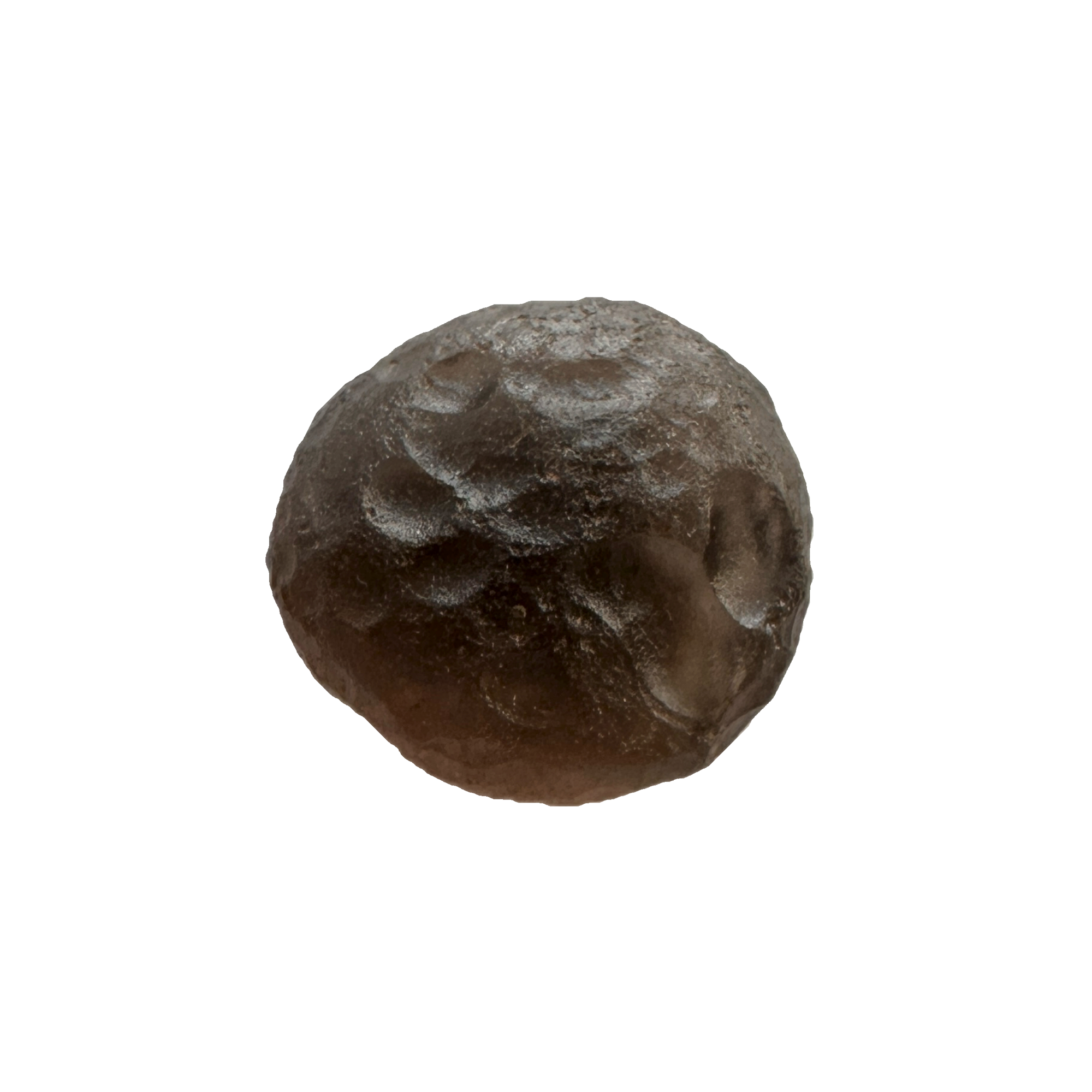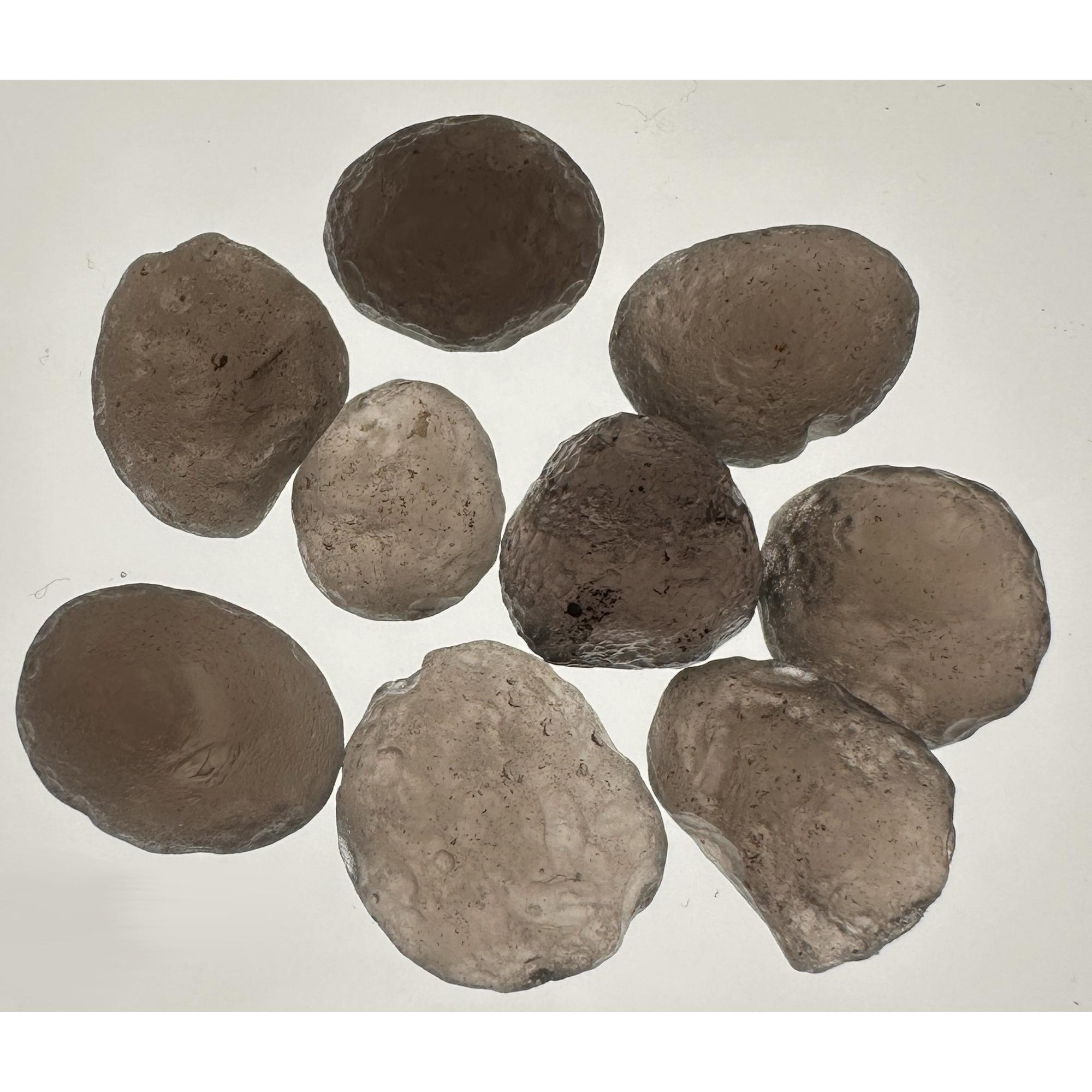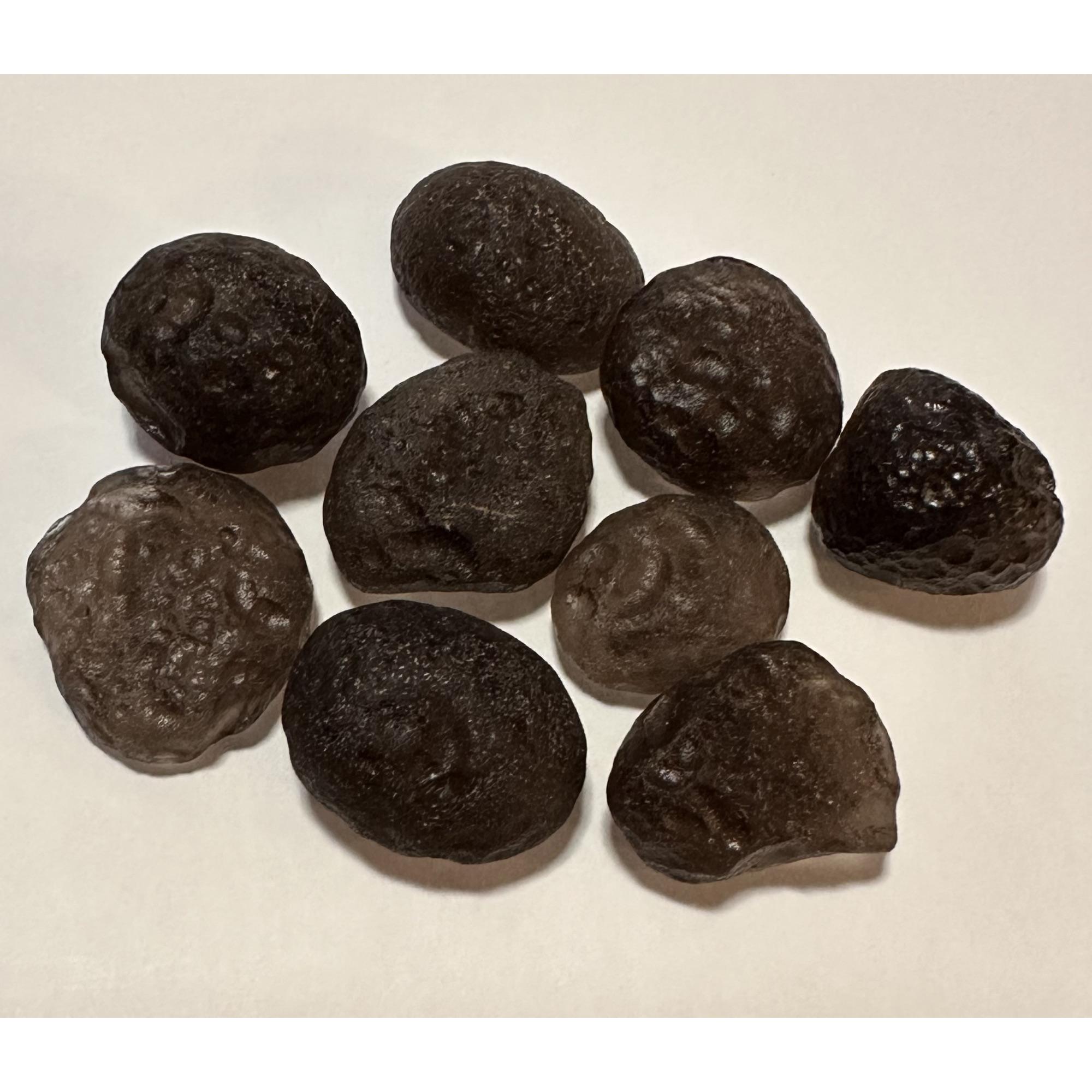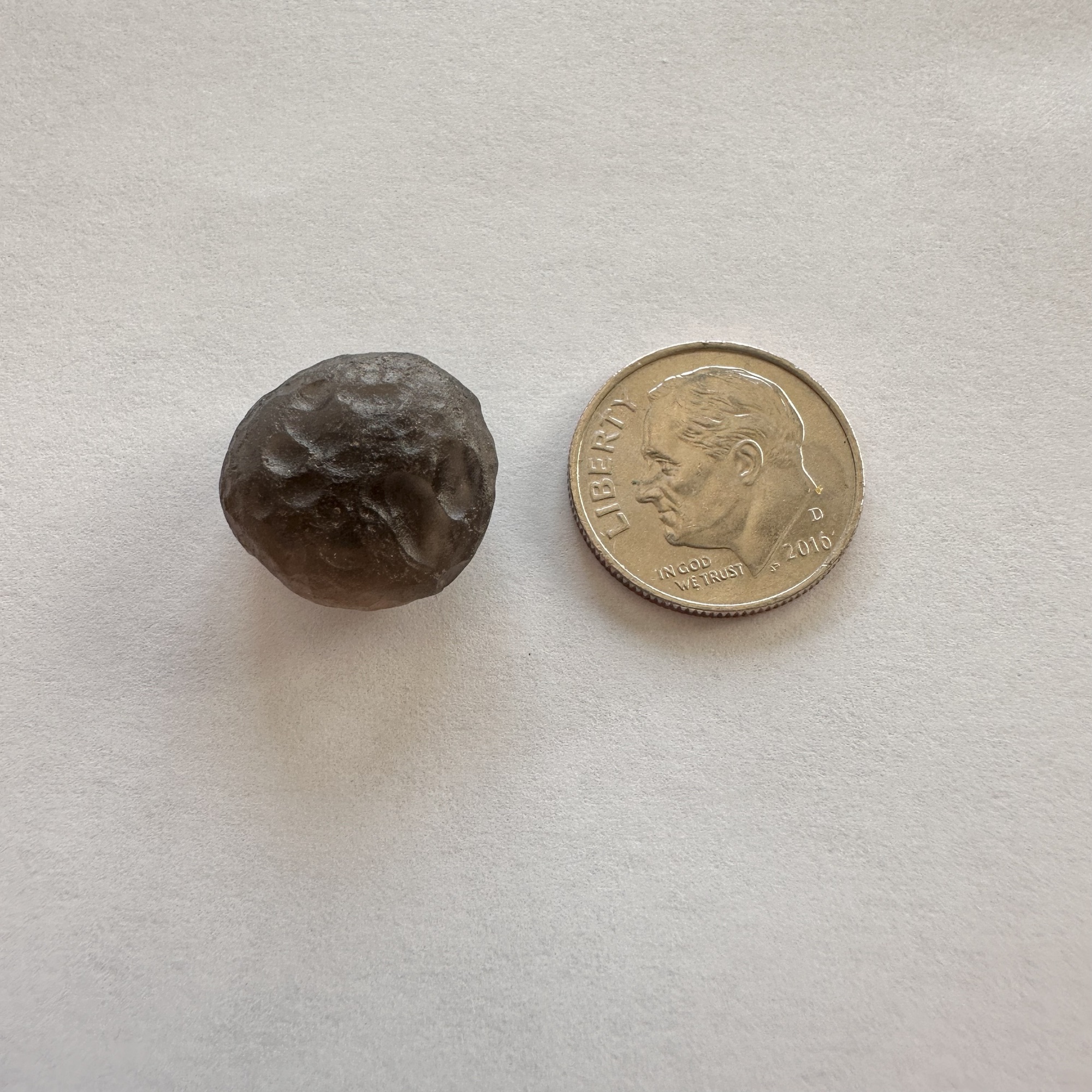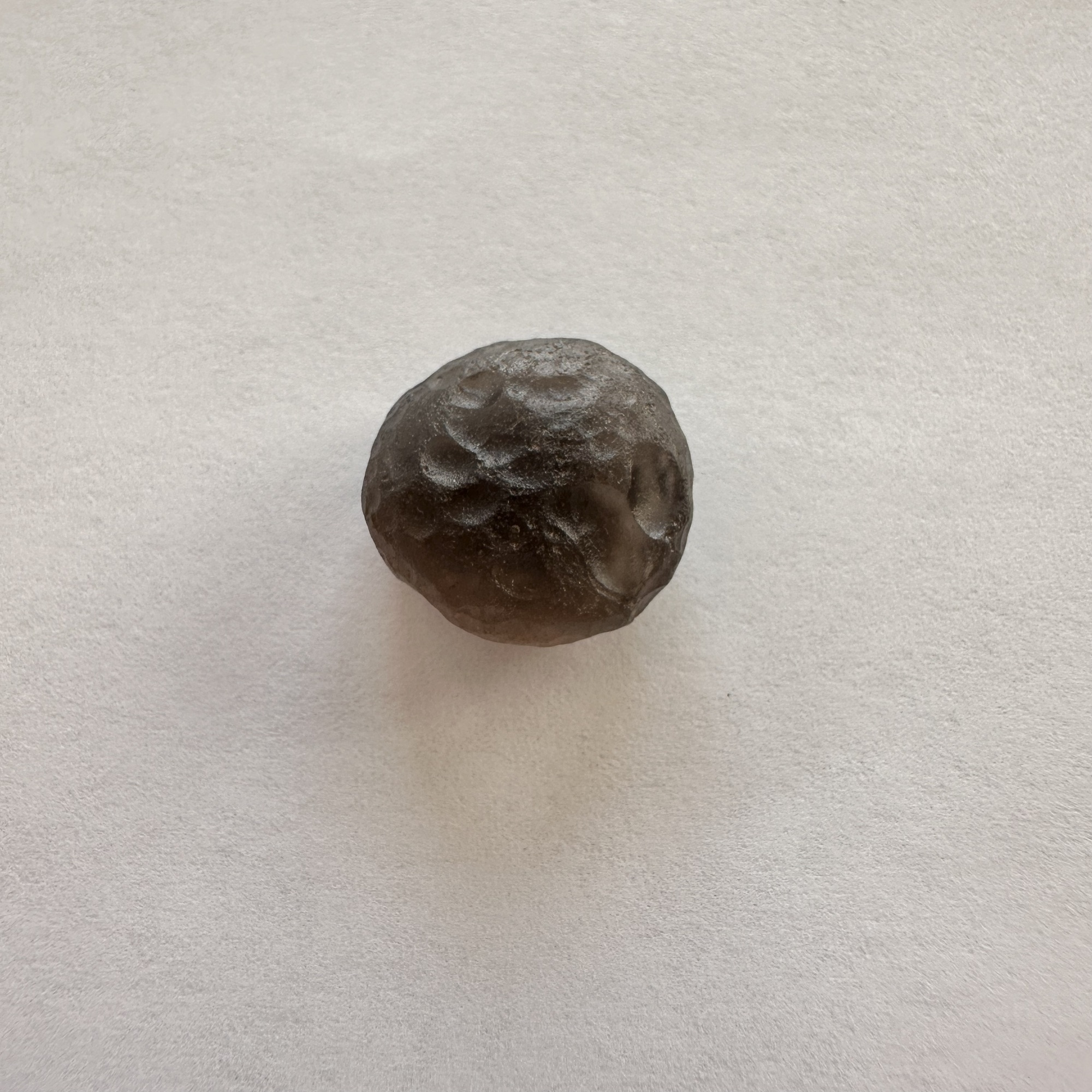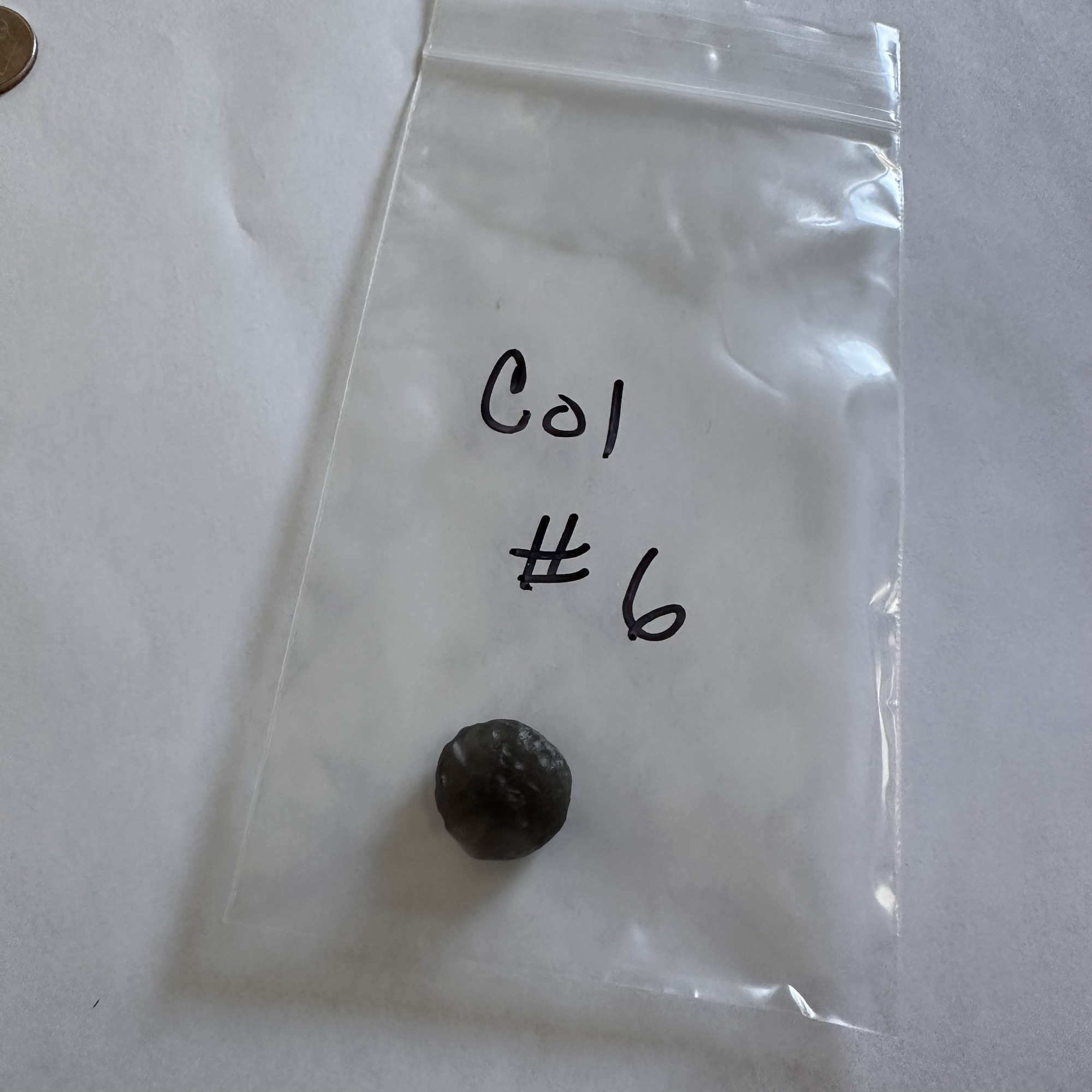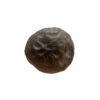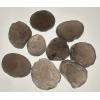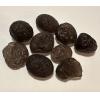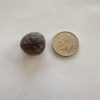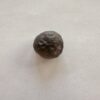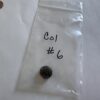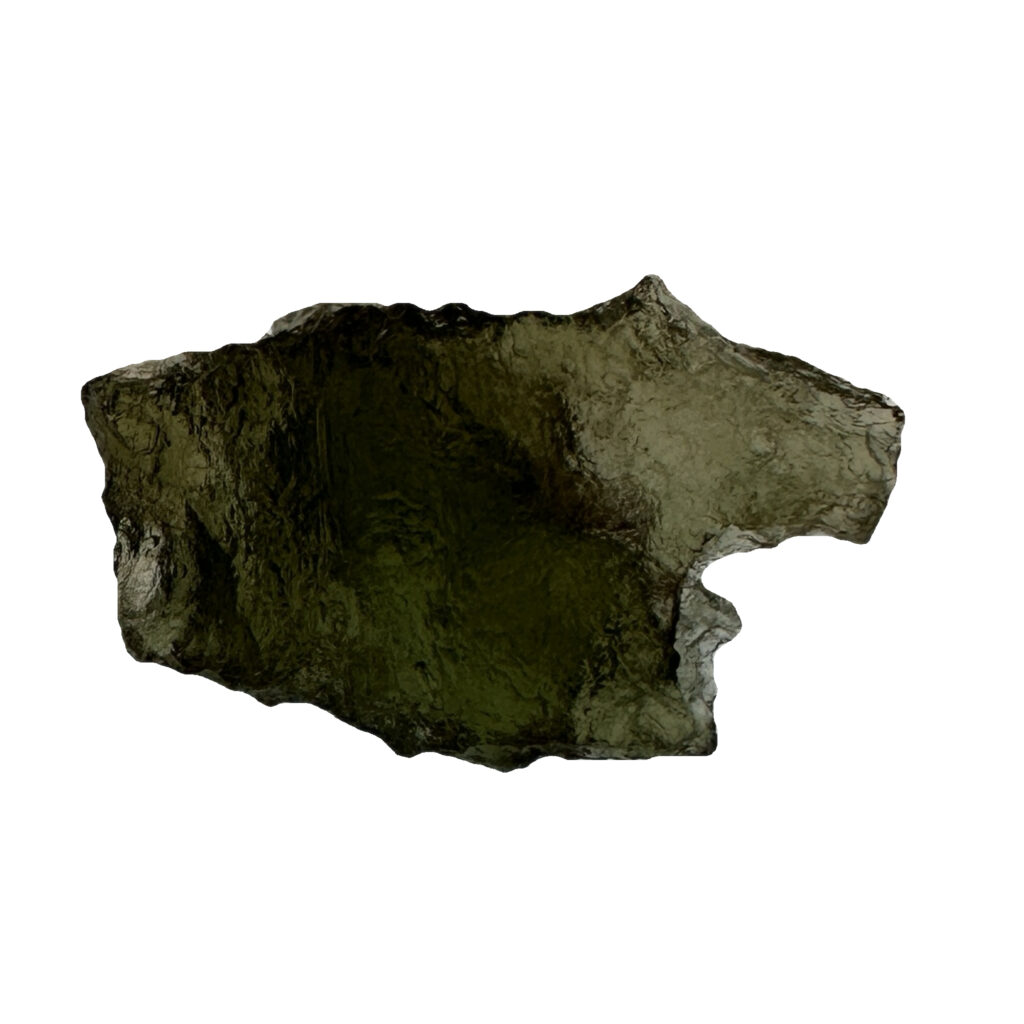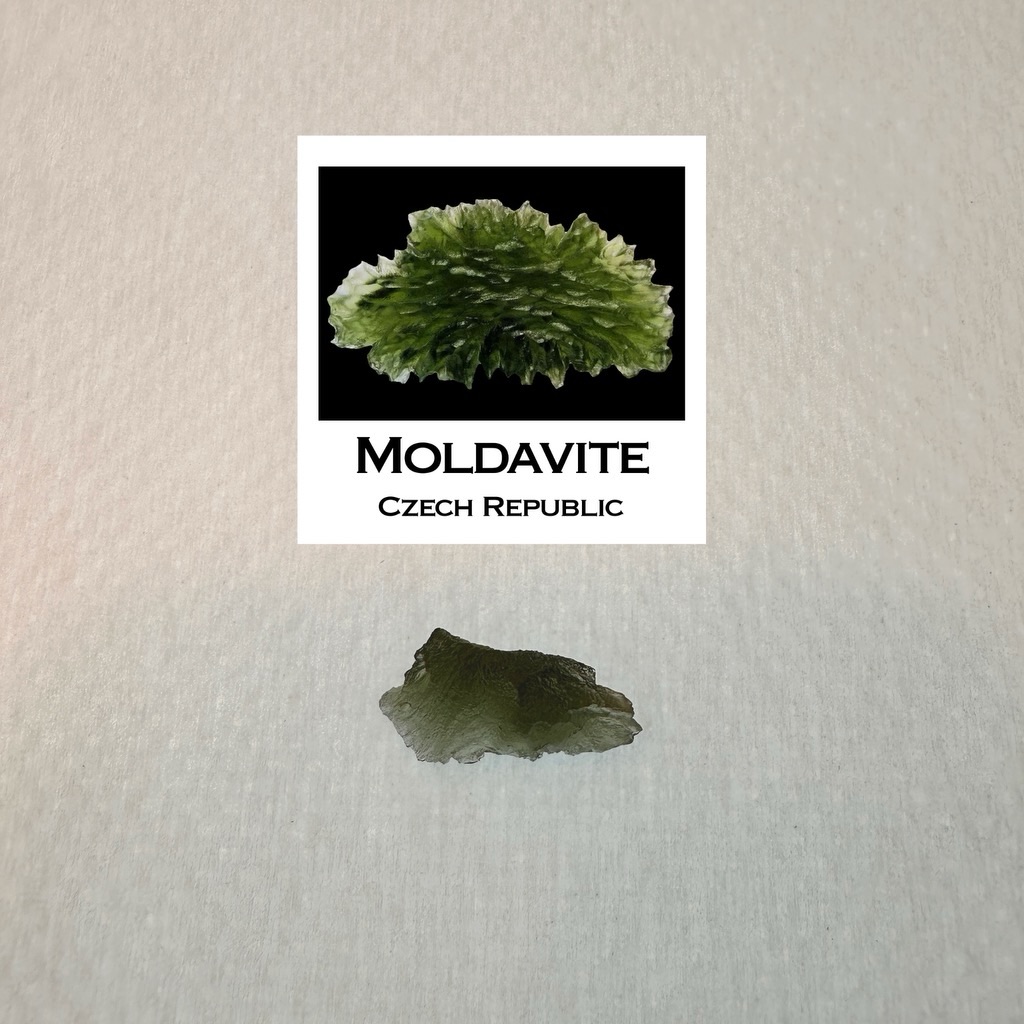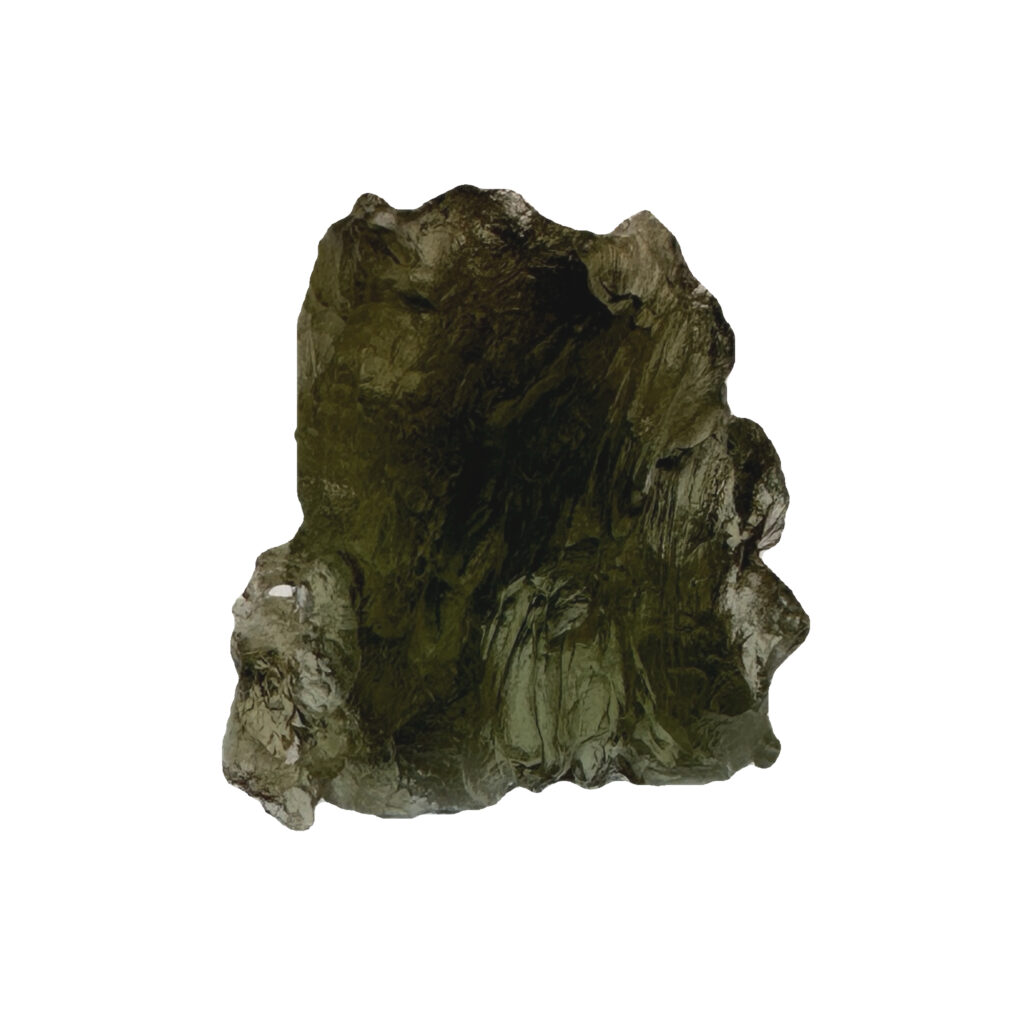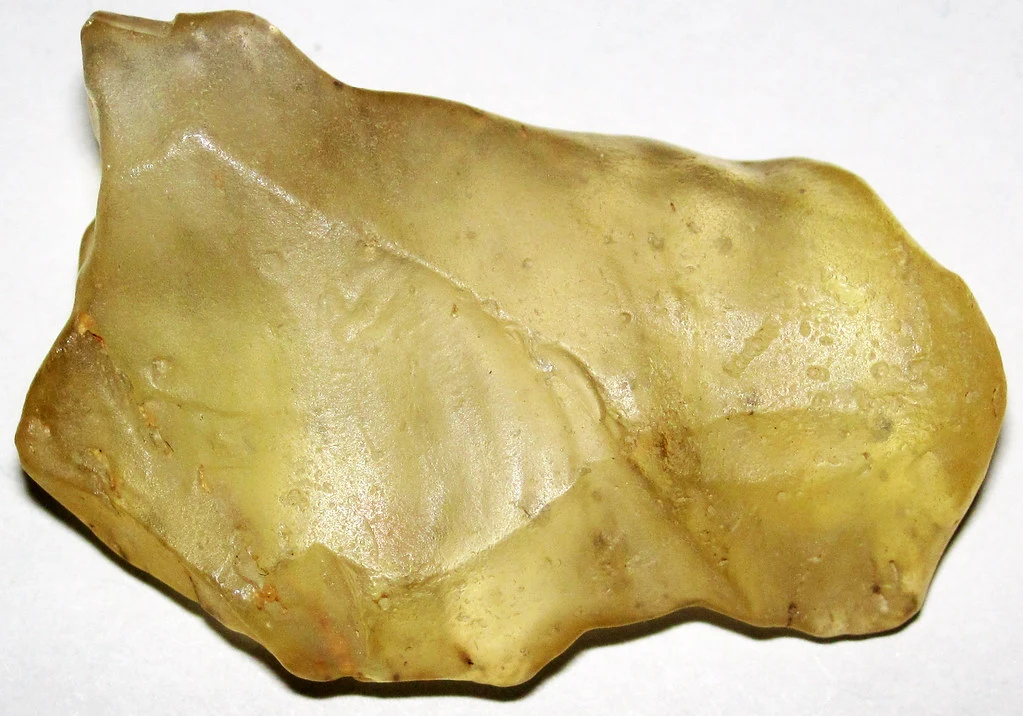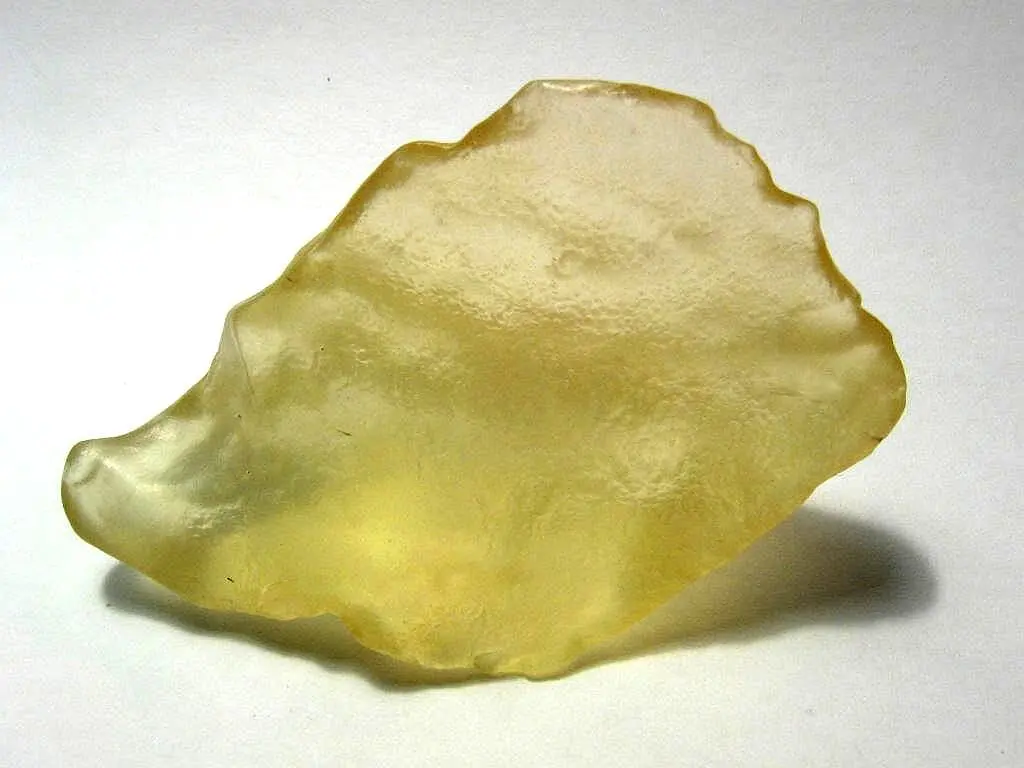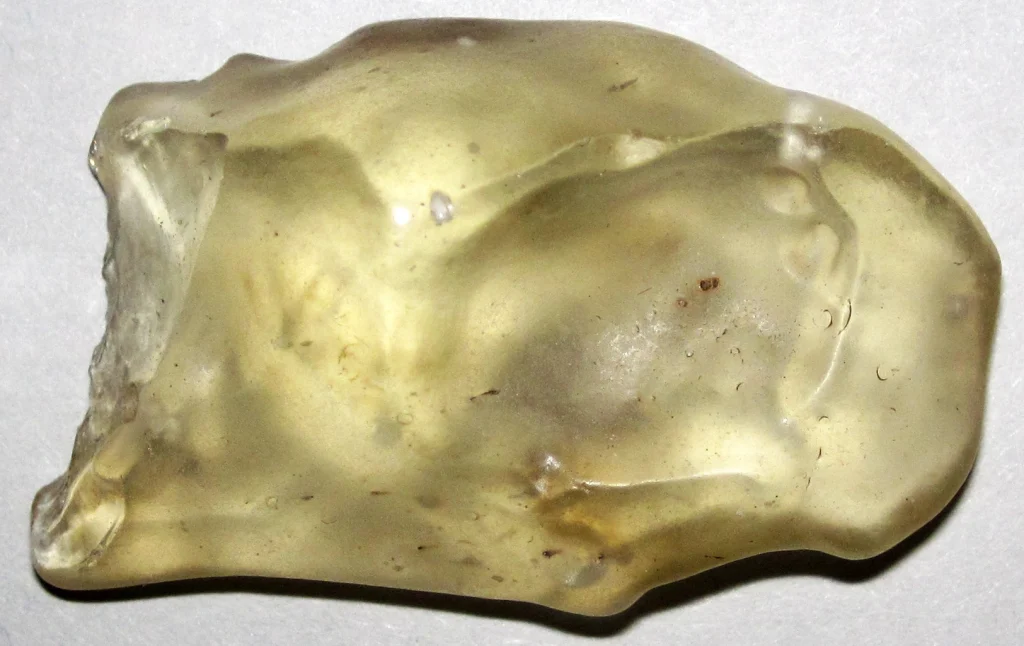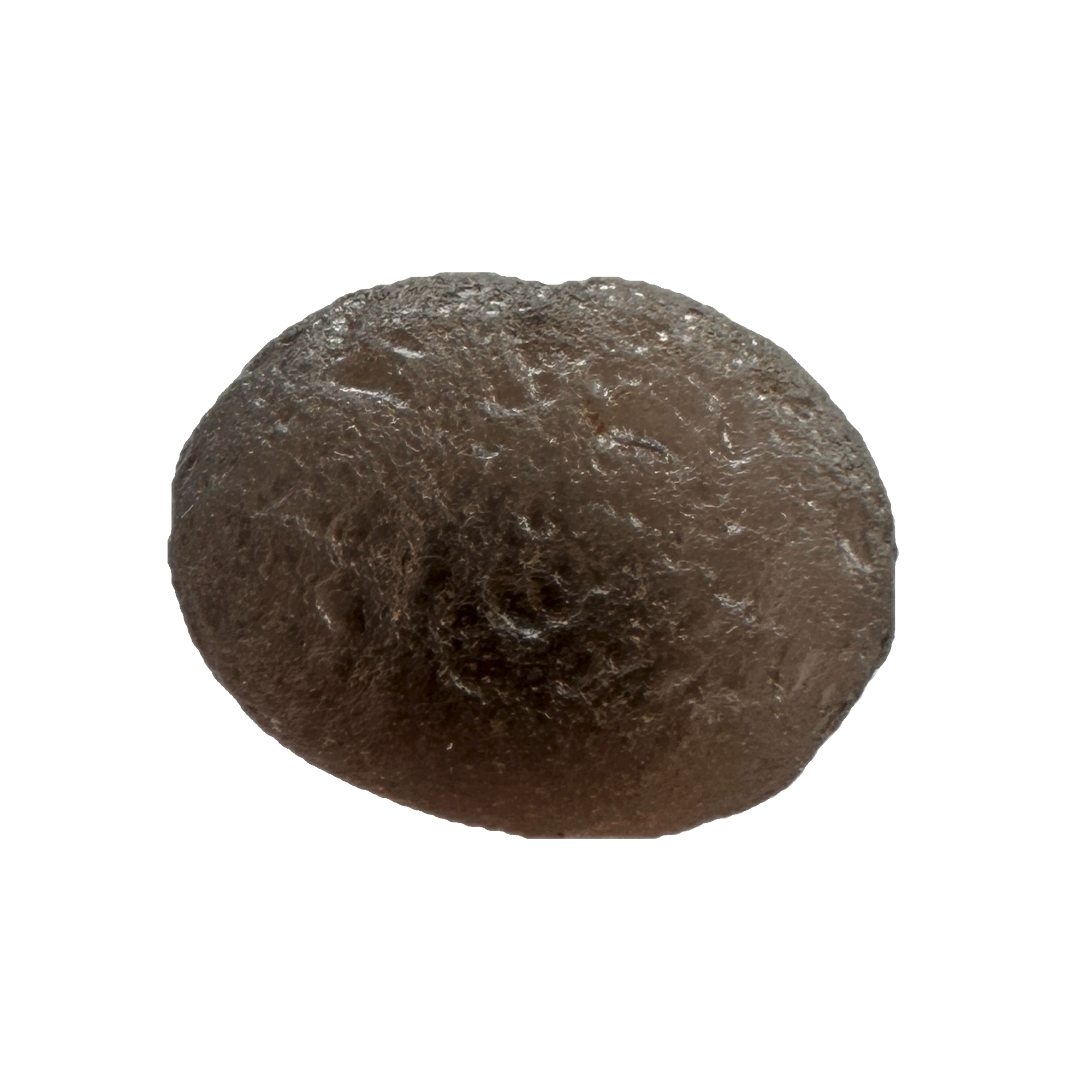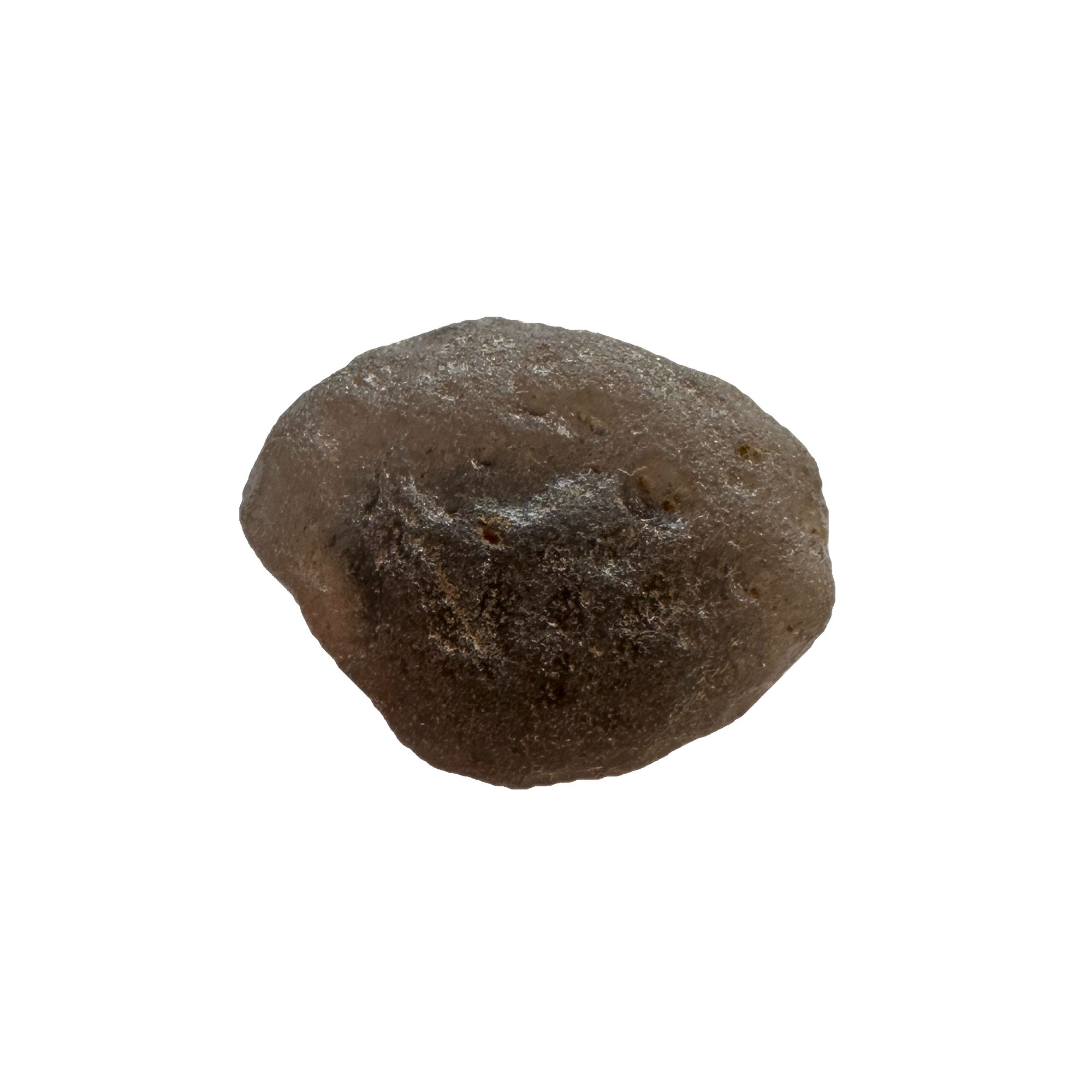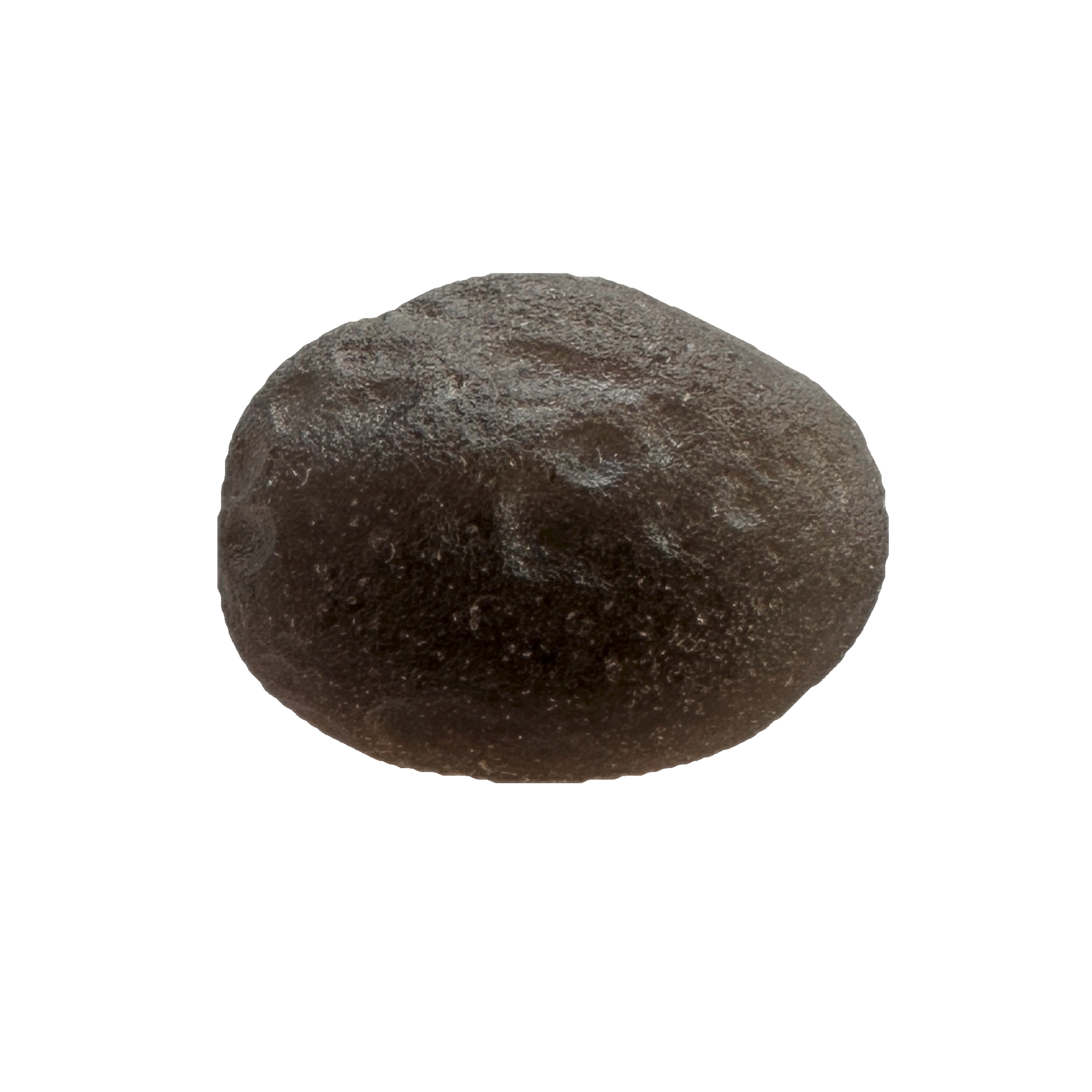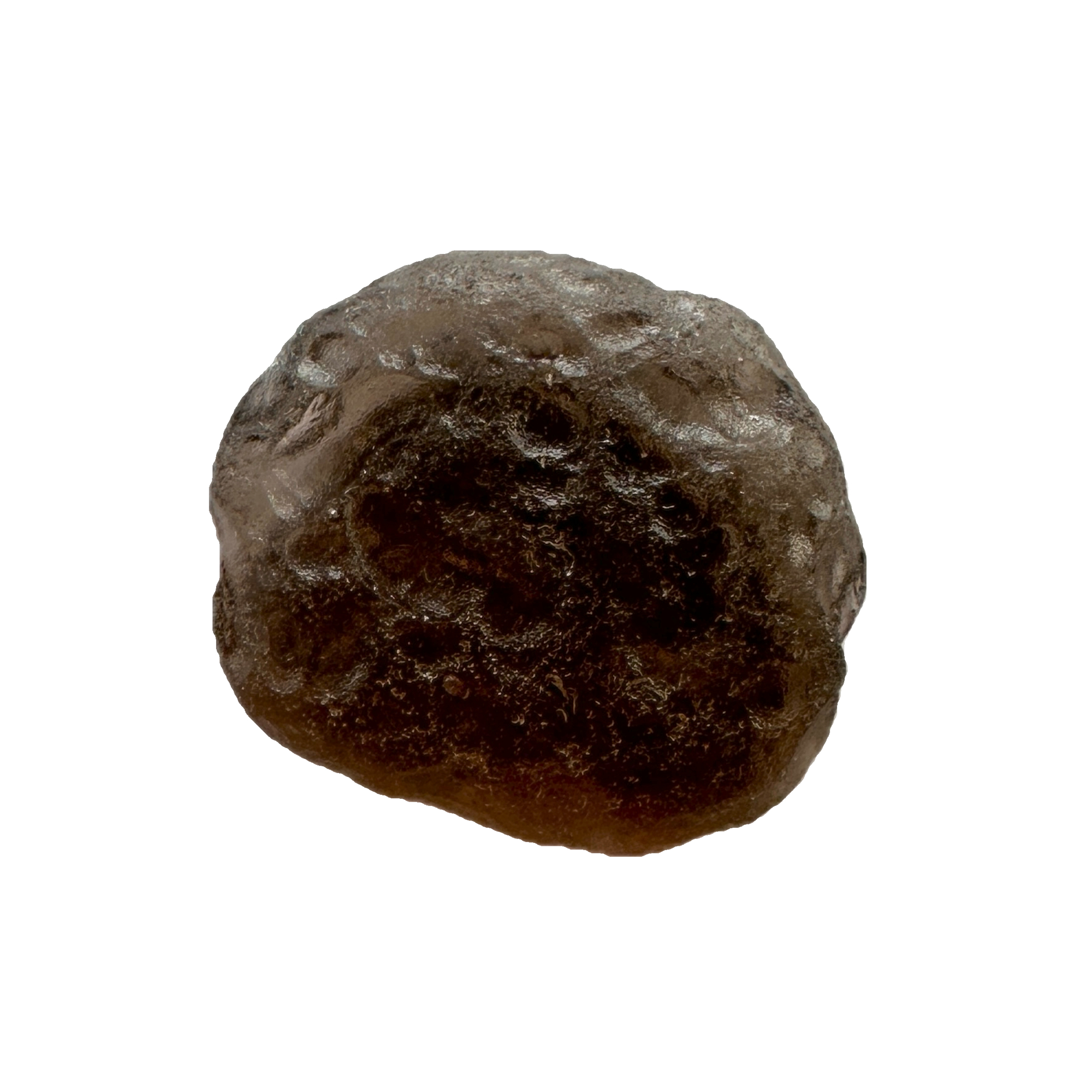Nestled in the heart of Colombia’s Valle del Cauca region, Colombianite emerges as a gem shrouded in mystery and wonder. Born from the cataclysmic impact of a meteorite millions of years ago, it boasts a semi-transparent, dark gray-brown hue, its surface adorned with intricate, celestial-inspired patterns. Typically measuring around 3/4 inch in length, this Colombianite holds a magnetic appeal for collectors and spiritual seekers alike. Revered for its believed ability to unlock inner wisdom and promote emotional healing, it occupies a revered place in the realm of metaphysical practices. Its origin story, rooted in the rich soils of Valle del Cauca, adds an extra layer of enchantment, ensuring its significance resonates deeply within geological and esoteric circles worldwide.
Tektites are fascinating natural glasses that form when a meteorite impacts the Earth, melting terrestrial rocks and ejecting molten material into the atmosphere. This material cools and solidifies as it falls back to Earth, creating unique glassy objects found in various parts of the world. Among the most well-known tektites are moldavite from the Czech Republic and Libyan desert glass from Egypt. These tektites have captured the imagination of people for centuries, often being associated with myths and legends due to their mysterious origins and unusual properties.
Moldavite is a forest green tektite found in the Czech Republic, particularly in the southern Bohemian region. It is believed to have formed about 15 million years ago during the impact of a large meteorite. Moldavite is known for its beautiful color and unique surface features, such as wrinkles, bubbles, and pits, which result from its rapid cooling upon impact. Due to its rarity and unique appearance, moldavite has been prized for centuries as a gemstone and has been used in jewelry and spiritual practices.
Libyan desert glass, on the other hand, is a translucent yellow-green tektite found in the eastern Sahara Desert, particularly in areas of modern-day Egypt and Libya. It is thought to have formed around 29 million years ago when a meteorite impacted the desert, melting the sand and forming the glassy material. Libyan desert glass is known for its clarity and can range from pale yellow to a deep golden color. It has been used by ancient cultures for making tools and jewelry, and like moldavite, it also carries spiritual significance for some people.
Tektites are found in several other locations around the world, each with its own unique characteristics. Australites are tektites found in Australia, primarily in the southern part of the continent. They are typically black or dark brown and are often found in shapes resembling buttons, dumbbells, and teardrops. Bediasites are tektites found in Texas, USA, and are known for their dark brown to black color and often flattened or disc-like shapes.
Indochinites are tektites found in Southeast Asia, particularly in Vietnam, Laos, and China. They are typically black and have a distinctive button or dumbbell shape. Philippinites are tektites found in the Philippines and are known for their dark brown to black color and irregular shapes.
Tektites are of great interest to scientists because they provide valuable information about impact events and the processes that occur during meteorite impacts. Studying tektites can help scientists better understand the dynamics of impact events and their effects on Earth’s geology and environment. Tektites also offer insights into the composition of the meteorites that caused their formation, as they often contain traces of the meteoritic material.
Moldavite
Moldavite is a fascinating gemstone with a unique origin story and a rich history. This translucent green gem is believed to have been formed around 15 million years ago when a meteorite impacted the Earth in what is now the Czech Republic. The intense heat and pressure of the impact melted the local rock, creating a hot, fast-moving mixture of vaporized meteorite material and melted local rock that was ejected into the atmosphere. As this mixture cooled and solidified, it formed droplets of green glass that fell back to the ground as tektites, which are natural glasses formed from terrestrial debris ejected during meteorite impacts.
The moldavite found in the Czech Republic is the most famous and sought-after variety, known for its striking green color and unique shapes. However, moldavite has also been found in other parts of the world, including Germany, Austria, and even as far away as the United States. These moldavites are often referred to as “moldavite cousins” or “moldavite-like tektites” because they share similar properties with Czech moldavite but have distinct characteristics that set them apart.
German moldavite, for example, is found in the region of southern Germany known as the Nördlinger Ries, which is also the site of a meteorite impact that occurred around 15 million years ago. German moldavite is similar in appearance to Czech moldavite, with a green color and unique surface features, but it is typically darker in color and may have a more irregular shape.

Austrian moldavite is found in the region of southeastern Austria known as the Waldviertel, which is also the site of a meteorite impact that occurred around 15 million years ago. Austrian moldavite is similar in appearance to Czech moldavite, with a green color and unique surface features, but it is typically lighter in color and may have a more translucent appearance.
In addition to these European varieties, moldavite-like tektites have also been found in other parts of the world, including the United States. These tektites are often found in association with other impact-related materials, such as shocked quartz and impact breccia, and are believed to have been formed during meteorite impacts that occurred millions of years ago.
Moldavite has long been prized for its beauty and metaphysical properties. It is believed to have powerful spiritual and healing properties, and it is often used in jewelry and as a decorative stone. Moldavite is also believed to enhance meditation and spiritual growth, making it a popular choice among those seeking to connect with the Earth and the cosmos.
Libyan Desert Glass
Libyan desert glass is believed to have formed approximately 29 million years ago during a meteorite impact event. The prevailing theory suggests that a meteorite struck the Earth’s surface with immense force, causing the sand in the desert to melt and fuse together, forming glass. This glassy material, known as tektite, was then scattered across the desert by the force of the impact.
Libyan desert glass typically appears as translucent to opaque yellow-green fragments. It can range in size from tiny shards to large, meter-sized pieces. The glass often exhibits unique features such as flow lines, bubbles, and embedded mineral inclusions. Despite its age, Libyan desert glass maintains its pristine appearance due to the arid and stable desert environment where it is found.
The primary deposits of Libyan desert glass are located in the remote and inhospitable eastern Sahara Desert. These deposits are concentrated in areas of Libya and Egypt, particularly near the borders of these countries. The glass fragments are often found scattered across the desert surface or buried beneath layers of sand and gravel.
Libyan desert glass has captured the imagination of humans for centuries. Ancient Egyptians prized it as a precious gemstone and used it to create jewelry and ornaments. It was particularly revered due to its rarity and exotic origin. Some researchers speculate that Libyan desert glass may have been the legendary “yellow-green stone” known as the “Djed medu” mentioned in ancient Egyptian texts.
In addition to its cultural significance, Libyan desert glass is of great interest to scientists and researchers. Its unique chemical composition provides valuable insights into the conditions present during the meteorite impact event that created it. By analyzing the isotopic ratios of elements within the glass, scientists can determine the source of the meteorite and its trajectory. This information contributes to our understanding of celestial dynamics and the history of our solar system.
The discovery of Libyan desert glass played a crucial role in shaping our understanding of meteorite impact events. It provided tangible evidence of the destructive power of such impacts and highlighted their potential implications for life on Earth. Scientists study Libyan desert glass and similar tektites to better comprehend the effects of large-scale cosmic collisions and develop strategies for mitigating potential risks in the future.
Due to its scarcity and remote location, Libyan desert glass is highly prized by collectors and enthusiasts. However, efforts are underway to balance scientific research and conservation with the interests of collectors. Responsible collecting practices ensure that valuable specimens are preserved for future study while allowing enthusiasts to appreciate the beauty and rarity of Libyan desert glass.
Prehistoric 101 (Learn about fossils, minerals, and meteorites)
What are Tektites
Tektites of the World

